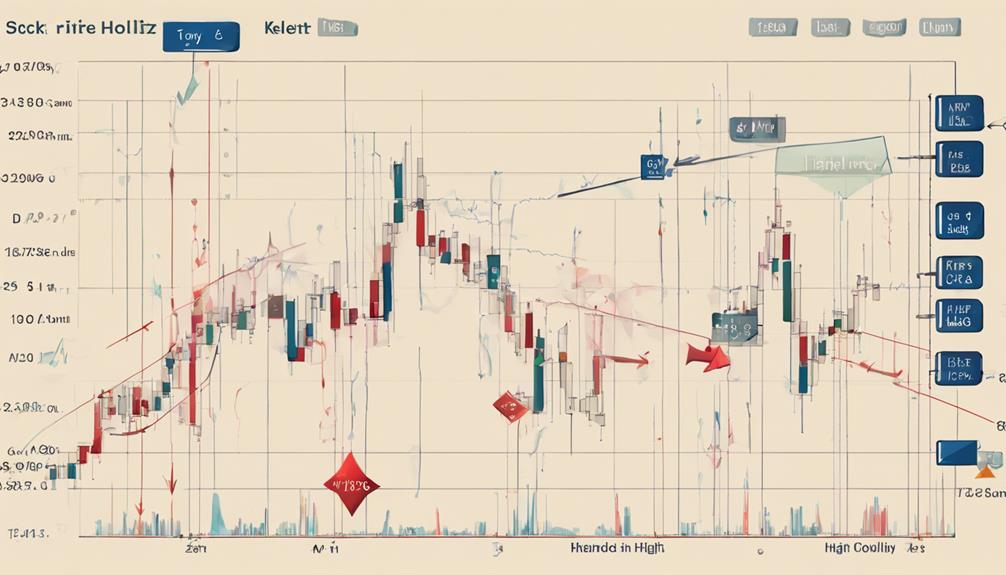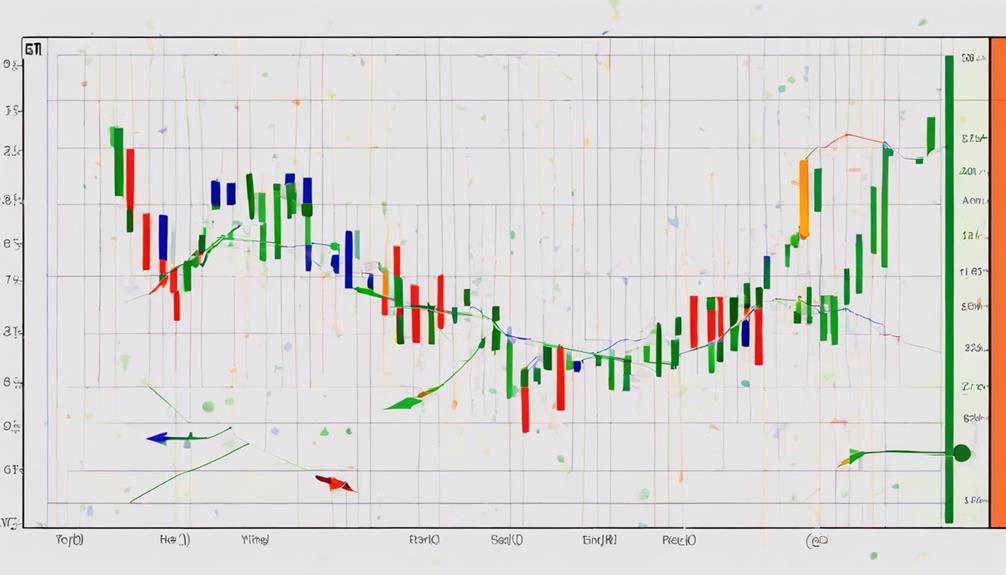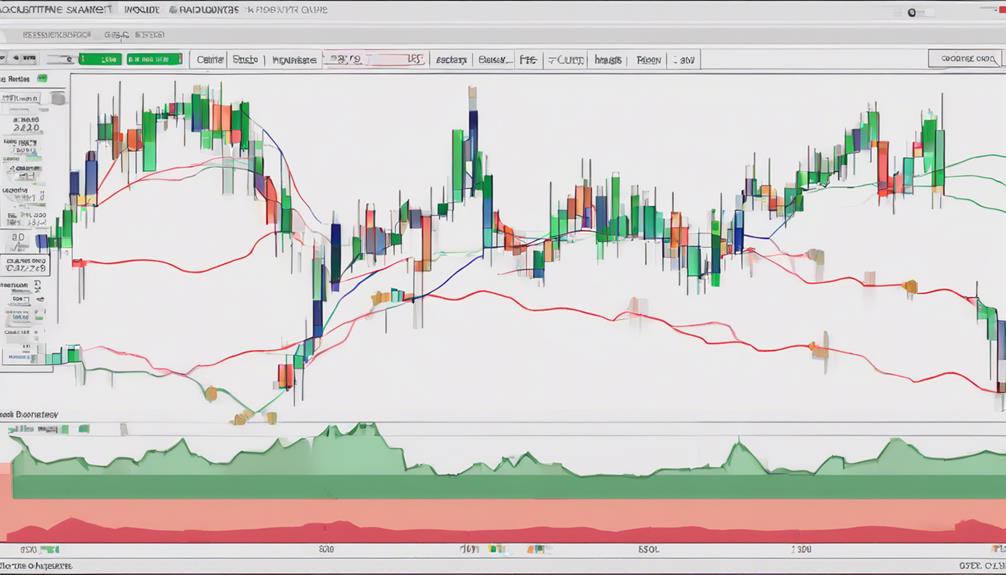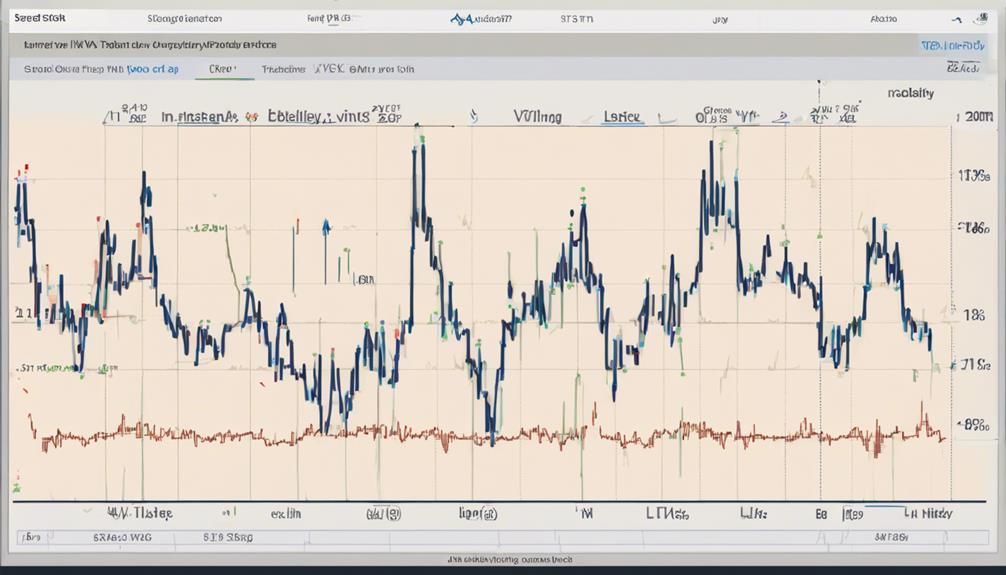Understanding how to interpret volatility indicators is fundamental in the realm of trading. By grasping the significance of standard deviation, categorizing volatility levels, considering external influences, utilizing diverse indicators, and acknowledging real-time data, traders can enhance their decision-making process and adapt to market dynamics more effectively.
These five strategies offer a comprehensive approach to navigating the complexities of market volatility and formulating informed trading strategies.
Bollinger Bands Interpretation
Bollinger Bands, a widely used technical analysis tool, offer valuable insights into market volatility and potential price movements. Consisting of a middle band, which is a simple moving average, and upper and lower bands representing standard deviations above and below the middle band, Bollinger Bands dynamically adjust to market conditions. Wider bands signal higher volatility, while narrower bands suggest lower volatility levels.
When prices touch or surpass the upper band, it may indicate overbought conditions, whereas touching or dropping below the lower band could suggest oversold conditions. The middle band acts as a key support or resistance level, and price movements crossing this band can hint at potential trend reversals or continuations.
Additionally, Bollinger Bands can help traders identify potential price breakouts, assess trend strength, and recognize overextended price levels, enabling them to make informed trading decisions based on the band's analysis of market dynamics.
Keltner Channel Analysis

Utilizing an exponential moving average (EMA) as its foundation, Keltner Channels serve as a valuable tool for assessing price volatility and potential market trends in currency pairs. This indicator consists of three key lines: the EMA itself, an upper channel line, and a lower channel line.
The distance between the upper and lower channel lines is used to measure volatility, with wider distances indicating higher volatility. Traders can utilize Keltner Channels to identify potential trend reversals and breakout points in the market.
When the price breaks above the upper channel line, it may signal a bullish breakout, whereas a break below the lower channel line could signify a bearish breakout. The automatic calculation of the Keltner Channel on most trading platforms makes it easily accessible for traders looking to incorporate volatility analysis into their decision-making processes.
Donchian Channel Strategies

Donchian Channel Strategies offer traders a straightforward method for identifying market volatility and executing buy or sell trades based on price breakouts. The upper and lower bands of Donchian Channels represent the highest and lowest prices over a specified period, respectively.
By using these bands, traders can effectively capture trends by entering long positions when prices break above the upper band and short positions when prices break below the lower band. Trend-following traders particularly favor Donchian Channels for their simplicity and effectiveness in tracking price movements.
The width of the Donchian Channel can serve as an indicator of trend strength, with wider channels indicating higher volatility and the potential for significant price movements. Overall, Donchian Channel Strategies provide traders with a clear framework for interpreting market dynamics and making informed trading decisions based on price breakouts within the channel boundaries.
Average True Range Understanding

Analyzing market volatility and risk management in trading strategies often involves a key metric known as the Average True Range (ATR), which quantifies a security's price range over a specific timeframe. Understanding ATR is crucial for traders to navigate market fluctuations effectively. Here are key points to comprehend the Average True Range:
- Measurement: ATR measures a security's price range, reflecting market volatility through the calculation of the average of true price ranges.
- Calculation: ATR considers the highest of three values, including the current high minus the current low, the absolute value of the current high minus the previous close, and the absolute value of the current low minus the previous close.
- Volatility Interpretation: Higher ATR values indicate increased market volatility and potential larger price movements, influencing risk management decisions and position sizing.
- Trading Strategies: Traders utilize ATR to set stop-loss levels, identify optimal entry and exit points, and adjust their trading strategies based on prevailing market volatility levels.
India VIX Application

The application of India VIX as a volatility index provides traders with valuable insight into the market's near-term volatility expectations in the Indian stock market. India VIX, derived from NIFTY 50 index options prices, reflects investors' perceptions of market volatility.
During times of uncertainty or market stress, India VIX tends to increase, signaling higher anticipated volatility. Traders utilize India VIX to assess market sentiment, evaluate risk levels, and tailor their trading strategies accordingly.
By monitoring India VIX, traders can anticipate potential market movements and adjust their risk management techniques proactively. Understanding India VIX aids in navigating the market's fluctuations, enabling traders to make well-informed decisions.
Incorporating India VIX analysis into trading strategies enhances the ability to adapt to changing market conditions and mitigate risks effectively. Overall, India VIX serves as a crucial tool for traders in assessing volatility, managing risk, and making informed decisions in the Indian stock market.
Can You Explain How to Interpret Volatility Indicators for Beginners?
Understanding volatility indicators can be challenging for beginners. A starter guide volatility indicators can help. These indicators measure the rate and magnitude of price movements in the market. By interpreting volatility indicators, beginners can make informed decisions about when to enter or exit trades.
Frequently Asked Questions
What Is the Best Indicator to Identify Volatility?
The best indicator to identify volatility in the market is the Average True Range (ATR). ATR measures the average range between high and low prices, providing insights into price volatility levels, facilitating risk management strategies.
How Do You Interpret Volatility Results?
Interpreting volatility results involves analyzing the degree of price fluctuations within a specified timeframe. Traders assess market conditions and manage risks by understanding the relationship between current price movements and historical volatility levels.
How Do You Analyse Volatility Indices?
Analyzing volatility indices involves assessing market expectations and sentiment through options prices. By monitoring changes in these indices, investors can anticipate potential shifts in market dynamics, helping them make informed decisions based on market sentiment and risk levels.
What Is the Best Way to Measure Volatility?
Measuring volatility involves utilizing indicators like Average True Range and Bollinger Bands to gauge price fluctuations and potential breakout points. Understanding these indicators aids traders in assessing market risk and making informed decisions to adjust trading strategies.
Conclusion
In conclusion, interpreting volatility indicators in trading is akin to navigating a turbulent sea with precision instruments.
By understanding standard deviation, categorizing risk periods, considering macroeconomic events and human psychology, utilizing various indicators, and tracking real-time data like the VIX, traders can steer their strategies with confidence.
Just as a skilled sailor reads the winds and currents to reach their destination, traders can interpret volatility indicators to optimize their trading decisions.
